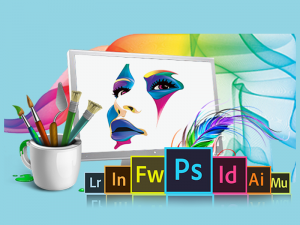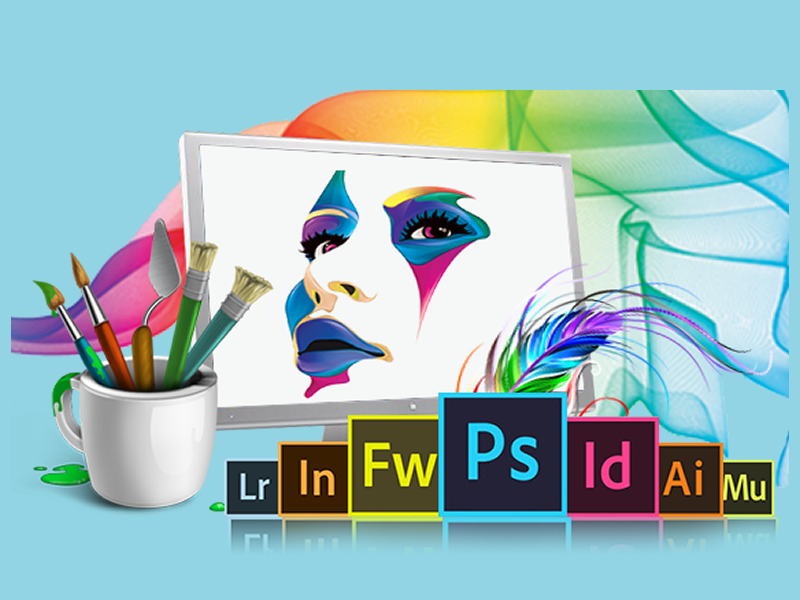What is the difference between Photoshop and Illustrator?

If you have a painting and want to perfect it, you can use Photoshop Illustrator. You need to go through some of the steps before you get refined paint. This will add a new dimension to your painting; refining his painting skills and giving him an edge over other contemporaries. With this procedure, you buy perfection and make your imagination come true.
However, the only obstacle between your painting and an illustrator is the “way to bring your painting to the illustrator.” You must be crazy about this thing. Let me make things easy for you. It is a fairly easy task to perform and take your painting to the illustrator.
Step # 1: scanning your painting
If you have developed a painting with your hands and want to refine it using Photoshop illustrator, what you need to do is: Scan it. However, it sometimes happens that your painting is much larger than a scanner, so it feels like a setback for the path to the refined photo. Don’t lose hope that you have ways. Capture your painting through a camera lens and access your computer.
You have to make sure: a high-resolution scan of your image is a must.
Step # 2: Transport the file to the program, that is, illustrator.
Once you are done with the scan and have entered your painting on your computer, the next step is to transfer your painting file to the program, i.e. illustrator. Now refined painting is just a few clicks away.
Step # 3: Work on each layer of colors:
Define the layers of the colors you have in your painting and work with each one individually. This will help you get to the details.
Step # 4: Work on the pencil layers.
This is the fourth step in refining your painting. The illustrator is able to determine the smoothness of the pencil and also the layers. You have several tools available with the illustrator to help you get to the layers of your painting.
Once you are done with each layer of paint, you can take a look at the collective effects of these layers.
More Advantages of Illustrator PhotoShop:
People also use Photoshop illustrator to fill in the colors of their paintings. Those who are skilled in drawing and sketching make use of the illustrator in this way. Illustrator finishes the painting. Illustrator never lets a stroke go wrong, so a perfect painting beats it. In the event you have a wrong stroke, you can press Control + z to undo your stroke, it is not an option available with actual paint. You can undo a lot of things like color, layers, and applied effects, etc.
You will be taken to the registration page where you will give your name and email address, and you will receive every 4 items in canvas, oil, watercolor and pencil, cartoon drawing.
Photoshop contains some great vector tools and features. But when it comes to creating works of art, seasoned digital artists, illustrators, and designers rarely limit themselves to a single software application. It’s no secret that when it comes to drawing with vectors, there is no better option than Adobe Illustrator. Illustrator has been the industry-standard vector art tool for as long as I can remember.
Personally, I’ve been using it as an integral part of my digital toolkit since 1991. Illustrator’s features and functionality are unmatched, but what do you do when you want all the great vector creation capabilities that Illustrator offers, but you also want the great paint tool functions in Photoshop? The answer is simple: combine the two apps.
And believe it or not, when you come to creating a stunning Art Noveau masterpiece like the one you see the tutorial, you simply need to copy and paste. Bottom line: Photoshop and Illustrator work very well together. We’ll explore the benefits of bringing existing vector art from Illustrator into Photoshop and using it as vector building blocks to create the piece you see here.
More specifically, we’ll paste vector art into Photoshop, layering shapes and paths as the Illustrator data arrives in Photoshop. We use paths to make selection borders, and that we will duplicate and edit shape layers to suit a spread of purposes. Once the vectors are safely in situ, we will employ Photoshop’s wonderful painting and compositing tools, leading to a nostalgic piece of art that’s a mixture of sharp vectors and soft painted elements.
Generally, once I witness inexperienced Illustrator users trying to make similarly-styled artwork, they believe stroke attributes to make the image outline. An unfortunate result of this method is that there’s little or no expressive quality within the linework. What makes linework expressive within the context of an illustration is that the variation in thickness and therefore the way the ends of every line are tapered, tapered, or rounded.
Of course, there are options within the Stroke palette that allow you to vary the top points of the line; but again, just like the uniform stroke thickness, those just aren’t expressive enough. The simplest thanks to achieving the specified expressive quality are to concentrate on the sketch. Once we draw, something intuitive happens, and it becomes an easy or maybe subconscious act to make expressive line work. Inside the software, it is a different story. We’d like to specialize in preserving the innate and expressive quality of our drawing while creating the finished product.
This goal can’t be achieved by using stroke attributes, but by creating each element manually with the Pen tool. However, there’s quite just mastery of the Pen tool. There’s a logical method of construction, which involves first creating an outer shape. The subsequent step is to subtract an indoor. This may provide it with its expressive outline; then, the small print is created as closed shapes and therefore, the results unified. The Pathfinder palette plays a central role during this systematic drawing process.





















+ There are no comments
Add yours